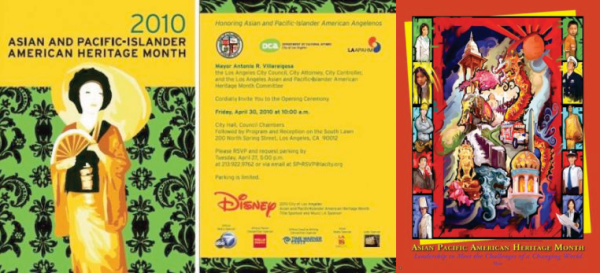
Republished with permission from Projekt NewSpeak.
I recently attended a meeting for the city of LA’s Asian Pacific American Heritage Month Committee. I was very excited to get involved and see what great things were being planned. A heard that a group of dedicated community reps and city employees came together to organize a month-long celebration of Asian Americans. About twenty minutes into the meeting, my excitement turned into doubt, doubt then led into frustration and confusion.
What happened?
For one thing, their concept of how we as Asian Americans are to be perceived was something I couldn’t get myself to agree on. For the entertainment, their best ideas were to bring in traditional dancers and have the entire venue be devoted to Chinese dragon dances, bhangra, and other very cultural performances. When someone suggested bringing in youth performers, a committee member shouts: “Oh, we can bring in YOUNG Taiko drummers!” Wow. Fail. WOW. FAIL. What the suggestion actually meant was bringing in youth talent such as Kaba Modern, Quest Crew, and Bhangra Empire.
After that, I tuned out for the rest of the meeting and just had to wonder why the committee, the majority of them being Asian American, could not realize that the image they are portraying is not the complete picture of what Asian America really means. I’m not dismissing on these traditional dances as they are important aspects to who we are as Asians, but this is about Asian AMERICAN and the two — while inherently linked — are very different. Yet it is the pervasive idea that remains with us because they are catering to how the mainstream perceives Asians — cultural and non-mainstream. They are playing the easy and safe route; they are going with what is most familiar. I understand that, and I want to make sure that I get both sides of the argument. I understand that cultural festivities are are very exciting and new, and can pack an event.
I can’t help but ask myself: “Is being Asian all about our extravagant cultural dances, traditional dress and our tasty food?” Things went further downhill a week ago when the committee unveiled their design for the Opening Ceremony Invitation letter:
No disrespect to the committee, but the featured image is pretty, um, exotic? Geisha-ish? “Honoring Asian and Pacific-Islander American Angelenos.” Really? Is this all there is to what being Asian American is all about?
Other than the exotic image that the committee is sending out to the districts of Los Angeles, I also find an issue with this design because it does not speak to the diversity of Asian Americans. When I say diversity, this applies to the East, Southeast, South, and yes, even the Central Asian community. Far too often, when we say “Asian,” we seem to only talk about East Asians and occasionally Southeast Asians. Although centuries of Western imperialistic actions have driven the wedge between the East and South Asian communities in terms of who is Asian and who is not, let me just say this: I may be “yellow” and Desis may be brown, but we are all Asian, we are all considered model minorities in the eyes of mainstream America.
Yet you may ask me, “If you are so against this picture, do you have something that’s better?”
I’m glad you asked because, yes, there is:
Now, that’s a beautiful design. This is how I see Asia America and what I wish the LA City Council would’ve taken inspiration from. This poster encompasses both the diverse Asian traditional heritages and the Americans that we are now. By having both, I believe this is the strongest way to show our roots and our pride of being Asian and American.
I must then go back to the question of what the frak “Asian America” means; that’s the thing that troubles me the most, because even now, the idea of Asian America is still relatively invisible to the world. Personally, I think of the foundations we laid out in this country as railroad workers and sugar cane plantation workers back in the 19th century, the 1960’s political movement that allowed Asians to fight against the “Oriental” label, the first pan-Asian civil rights movement in American history that mobilized after Vincent Chin was murdered in 1982, the JACL being the first civil rights organization to support gay marriage, artists and scholars like David Henry Hwang, Beau Sia, Yellow Rage, Edward Said, Ronald Takaki, and Helen Zia making a stand and having their voices heard. But not many people know this and what they do know are the images of geishas, dragons, kung fu experts, yakuza thugs, and the untrustworthy and inscrutable foreign menaces as we are often delegated as, even in 2010.
We are more than that. We are everywhere. And not just in the fantastical Asian movies that you watch, the take-out food from strip malls, or your liquor store clerk. We are the nation’s fastest growing minority and it’s time that we show everyone what being an Asian American really means.
And no, it does not just mean being a geisha holding a pretty umbrella.






